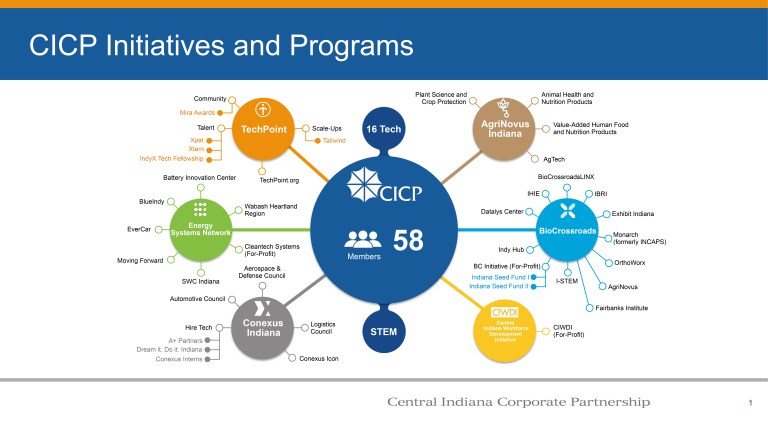
Last week I posted an article talking about the maturity curve, or the lifecycle arc from incubation to growth to maturity to decline that applies to so many things. And this weekend my review of Bruce Katz and Jeremy Nowak’s book The New Localism was published in the New York Times Book Review. These two items are related.
It’s been widely noted that trust in institutions has been declining across the board in America. Government, religion, media, and business have all seen declining trust. To be quite honest, that decline in trust is deserved. These institutions by and large are not meeting the challenges of our present day and are often dysfunctional.
The root of this at some level is the maturity curve. Our institutions are old and either in maturity or decline. (As I’ve observed many times, one reason sprawly suburbs seem so great in the now is simply that they are new, and so in the youth phases of their lifecycle).
At some level it’s hard to appreciate how old many of our institutions are. Some of them date to the American founding or before. Others are legacies of the 19th century or the New Deal. The high water mark of institutions was in the immediate postwar era – the Marshall Plan, NATO, the UN, the institutional infrastructure between things like the interstate highway system, structures like the GI bill, a then decently functioning corporatist combination of big business and big unions, and many other things.
But World War II ended almost 75 years ago. This is roughly the same distance as from the Civil War to World War II, and from the Revolution to the Civil War. These roughly 70 to 80 year epochs (the span of a human life, interestingly), produced major institutional resets in America, often after a process of upheaval. If history is any guide, we’re due for another one. (I gather that this might be the premise behind the book The Fourth Turning, which I have not read. My observations are my own, but I think rather obvious).
New Localism as Institutional Decay Workaround
I see “new localism” initiatives as an attempt to address this institutional decay. The premise seems to be that Washington is hopelessly broken and the state the wrong functional unit, hence cities and metropolitan areas need to find a way to accomplish institutional refresh for the 21st century.
Looking at the two domestic examples Katz and Nowak use, Pittsburgh and Indianapolis, what we see is the creation of new connectivity between institutions, and the creation of new layers or types of institutions to solve problems.
I will look at Indianapolis because I know that case the best. Katz and Nowak wrote up a case study on the Central Indiana Corporate Partnership. CICP is an economic development vehicle created by the top 50-60 major companies and universities in the broader Central Indiana area. CICP has developed and launched almost every major economic development effort in the state in the past 15 years or so. Here’s a map of everything they do.

Key attributes of CICP are that it is a civic sector initiative (though has partnerships with government), that is truly regional in scope, and which has a long-term time horizon that transcends politicians and electoral cycles.
Most cities and states have managed to create pretty much all of the initiatives that CICP has done. Most places have some sort of corporate council, either inside the chamber of commerce or separate from it. They have young professional groups, tech booster clubs, life sciences initiatives, etc. Yet the Indianapolis civic sector has been unusually cohesive and effective over the long term. CICP was a good choice for Katz and Nowak.
If the structures and institutions of government are inadequate to the 21st century, the CICP solution addresses this by essentially bypassing government and creating new, parallel institutions through which important things can get done. It’s essentially a workaround. It’s additive to existing institutions rather than reinvigorating them or replacing them.
CICP is a high functioning organization of its type, but the nature of this kind of institutional strategy (of which CICP is only one manifestation) leads to negative consequences elsewhere, namely in state and local government.
Though non-partisan (the current CEO is a Democrat, I believe), CICP has been tight with the Republican dominated state government. The state has a transactionally oriented economic development group called the Indiana Economic Development Corporation (IEDC), but otherwise has essentially outsourced economic development in the state to CICP.
CICP is thus a good example of what has happened generally in the state. A robust civic sector has essentially financed and enabled the retreat of government from its functions and responsibilities. The state loves to brag about its low taxes, AAA credit rating, and $2 billion in cash reserves, but part of that has been been accomplished because it has offloaded responsibilities to the private sector.
Just as one example, consider higher education. I’ve been writing a lot about the problems facing higher ed. It’s been widely observed that states have reduced their support for higher ed. Some of this has been because of financial problems at the state level due to mismanagement of pensions and debt, or understandable stress because of the Great Recession. Neither of these apply in Indiana today.
Given the link between research universities and economic development, you would think the state would see funding its flagship institutions as a critical economic development priority. But while I believe state funding has been relatively stable in Indiana recently, you can’t say that the state has been investing into its higher ed institutions.
In a superstar economy where the benefits flow disproportionately to the top of the pyramid, moving up the ladder is critical. Purdue is a top ten engineering school. That’s good. But it would be vastly more impactful if it were in the top five. Look at the economies around MIT, Stanford, and Berkeley, or around CMU’s #1 ranked computer science department.
What if the state of Indiana gave IU and Purdue another $100 million each annually for research? There’s nothing magic about that number and I’m not claiming that’s enough money for a radical change. I just picked it because the state could do that for a decade – a billion extra research dollars each for IU and Purdue – just with the money it already has in the bank – not a dime of extra taxes involved. But it’s not doing that.
So CICP doesn’t have a good partner in state government. Instead of being an entity that complements government investment, CICP effectively took over things that government would be much more heavily involved in elsewhere. If that freed the government to do things like invest in university research, it could be a big benefit to the state. Unlike many fiscally distressed states, Indiana is positioned to invest. Instead, it acts like Smaug sitting on its hoard of gold. The universities are actually investing the other direction, such as by participating in groups like CICP.
The situation is far worse at the local level. Indianapolis was historically famous for its mayors like Richard Lugar, Bill Hudnut, and Steve Goldsmith. But since then (Goldsmith left office in the 90s) the government of the city has atrophied to the point where it is largely ineffective. This winter saw the streets of the city turn into a cratered moonscape of potholes, forcing the city to do $14 million in emergency (and temporary) repairs. The parks department is all but non-existent. The Trust for Public Land ranked it dead last among American cities in spending on parks. It has only a fraction of the urban planners on staff of other cities its size, and last time I saw a job posting was only paying around $32,000 for someone with a masters degree in planning.
A highly functioning civic sector in Indianapolis effectively masked the collapse of government at the city level.
I believe a similar story could be told in Northeast Ohio. A group of local foundations created something called the Fund for Our Economic Future, and a series of regional economic development groups. It’s been widely praised and justly so. But these foundations and organizations are simply stepping into a vacuum. That’s admirable, but fixing the underlying institutional issues that created that vacuum in the first place is also critical. The Cleveland Foundation is America’s oldest and largest community foundation, but if it’s just funding things government ought to be doing anyway but isn’t, the region doesn’t really get the full benefit of that firepower.
This illustrates the limit of a new localism approach based only on new institutions and connectivity. New institutions can do very good things, but they can also become co-dependent enablers of the failure of existing institutions.
Our old institutions are still there and still declining. Something has to be done to fix or change them to become higher functioning. In particular, local government needs to be repaired and local services rebuilt and restored over time in many places. Other institutions probably need to be eliminated completely. This repair or replacement of existing institutions is a key part of any complete new localism and can’t be overlooked just because it’s hard.
This piece originally appeared on Urbanophile.
Aaron M. Renn is a senior fellow at the Manhattan Institute, a contributing editor of City Journal, and an economic development columnist for Governing magazine. He focuses on ways to help America’s cities thrive in an ever more complex, competitive, globalized, and diverse twenty-first century. During Renn’s 15-year career in management and technology consulting, he was a partner at Accenture and held several technology strategy roles and directed multimillion-dollar global technology implementations. He has contributed to The Guardian, Forbes.com, and numerous other publications. Renn holds a B.S. from Indiana University, where he coauthored an early social-networking platform in 1991.
Photo by tpsdave (Indianapolis-1888215) [CC0], via Wikimedia Commons












